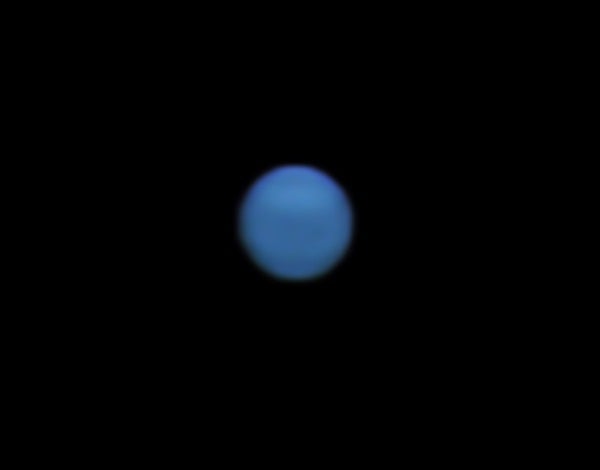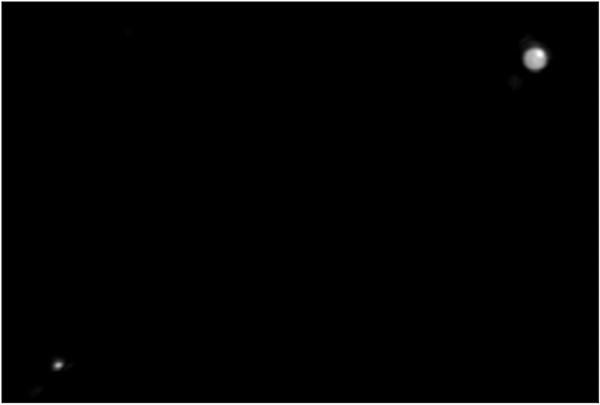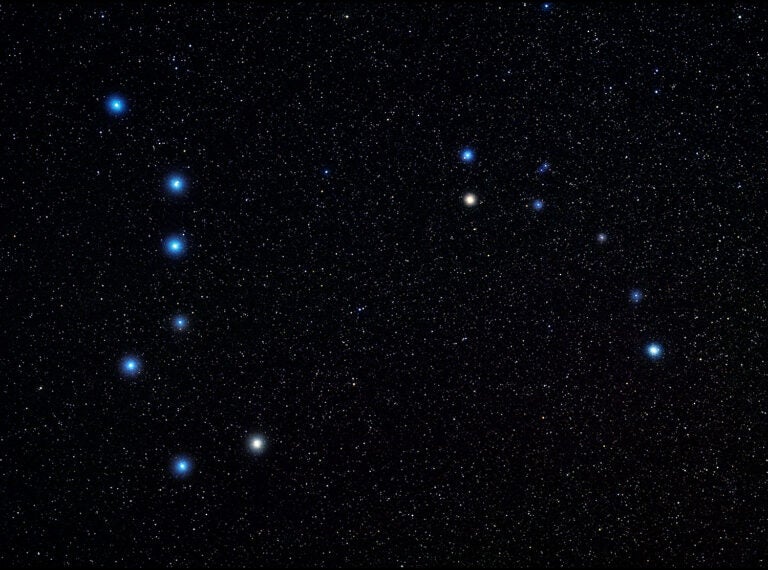Many readers have written me to say that they enjoy observing challenges. So this month, I’m giving you not one, but two to tackle. Have you ever looked for our solar system’s two most distant planets, Uranus and Neptune? Both are visible in tonight’s sky and are bright enough to spot through most binoculars — if you know where to look.
Let’s start with Neptune, which is high in the east as night falls, having passed opposition in September. It is currently located in a barren portion of eastern Aquarius. To find it, first locate by eye alone the Great Square of Pegasus and the bright star Fomalhaut (Alpha [α] Piscis Austrini). Once you spot both, aim your binoculars about halfway between the two. Scan slowly until you come to a distinctive obtuse triangle formed by the 4th- to 5th-magnitude trio of Psi1 (ψ1), Psi2 (ψ2), and Psi3 (ψ3) Aquarii. They create a pretty little asterism through binoculars and may be visible without binoculars under dark skies as a fuzzy patch.
Without moving the aim of your binoculars, look for 5th-magnitude Chi (χ) Aquarii, a pale red star about 1.5° northwest of the Psi trio. Another, slightly brighter red star appears 1.5° farther northwest still. That’s 4th-magnitude Phi (φ) Aquarii. Both of these red giants create a nice color contrast with the true-blue ice giant Neptune.
Right now, Neptune is 3° east-northeast of Phi. In fact, you can probably squeeze the planet as well as Chi, Phi, and the Psi trio all into your view. Of course, there are also several faint stars in the field that could be confused for Neptune. Which one is the planet? I’ll give you a hint: the giveaway is the color. Except for reddish Chi and Phi, all the stars in view will appear white. When you finally do identify bluish Neptune, you have found the most distant solar system member that is visible through binoculars. At midmonth, it lies 2.7 billion miles (4.4 billion kilometers) from Earth. The light you’re seeing tonight reflected off the planet’s cloud tops over 4 hours earlier.
Our second planetary conquest this month lies closer to home and farther east along the ecliptic. The other ice giant, Uranus, is currently 1.9 billion miles (3.1 billion km) from Earth, residing within the borders of Aries the Ram. It reaches opposition Nov. 2, making now a great time to spot it. Even though it is two magnitudes brighter than Neptune, Uranus may prove more difficult to find because there are no distinctive star patterns nearby. But that’s okay. Half the fun is the thrill of the hunt.
As you can see from this issue’s Star Dome (page 34), Uranus is far removed from Aries’ four-star pattern. Therefore, it is probably best to start our quest from the hexagonal head of the Whale asterism in neighboring Cetus to the south. The head is comprised of Menkar (Alpha), Lambda (λ), Mu (μ), Xi2 (ξ2), Nu (ν), and Gamma (γ) Ceti. The pattern spans nearly 6° by 10°. Although that is too wide to squeeze into a single field, binoculars will come in very handy to spy the asterism from suburban and urban skies due to the dimness of its stars.
Menkar, the brightest of the bunch at magnitude 2.6, is a red giant star and so should put on a ruddy appearance through binoculars. It teams with blue-white 93 Ceti just 16′ to its north to create an attractive binocular double star.
Aim toward Mu Ceti, the northernmost star in the head. Placing Mu toward the southern edge of the field of view will put 5th-magnitude 38 Arietis near the center. Moving 38 toward the southern edge will put 6th-magnitude Omicron (ο) Arietis near the center. You’ll notice Sigma (σ) Arietis just over 1.5° to its east and another greenish 6th-magnitude point about 1° to its west. That’s Uranus. Don’t confuse Uranus with 29 Arietis, which is about a degree farther west. All four points here — Omicron Arietis, Sigma Arietis, 29 Arietis, and Uranus — appear about the same brightness. But only Uranus will look green.
I would enjoy hearing from readers who spot either or both ice giants through their binoculars. Contact me through my website, philharrington.net. Until next month, remember that two eyes are better than one.











